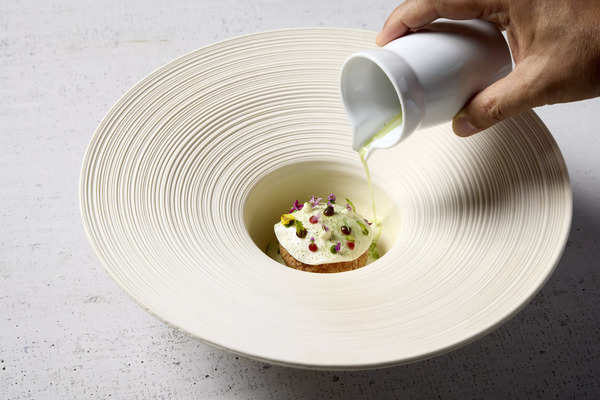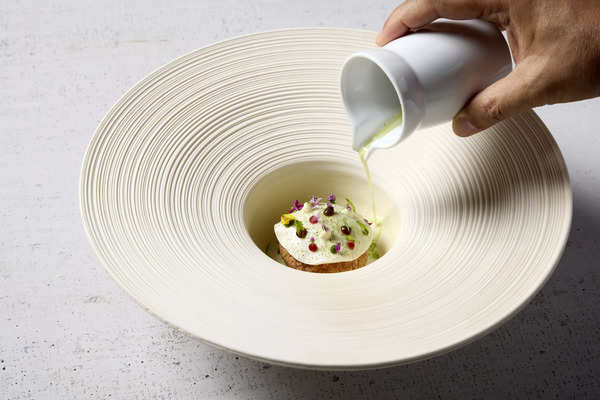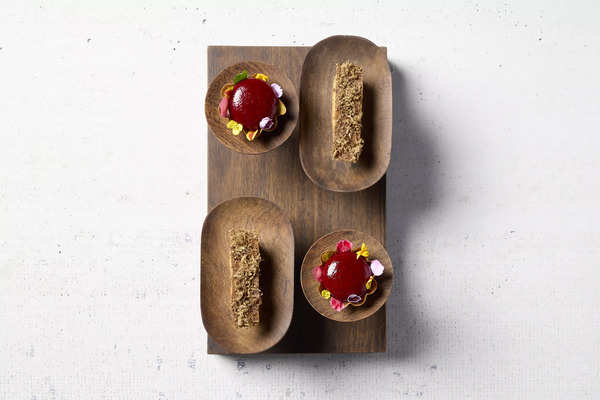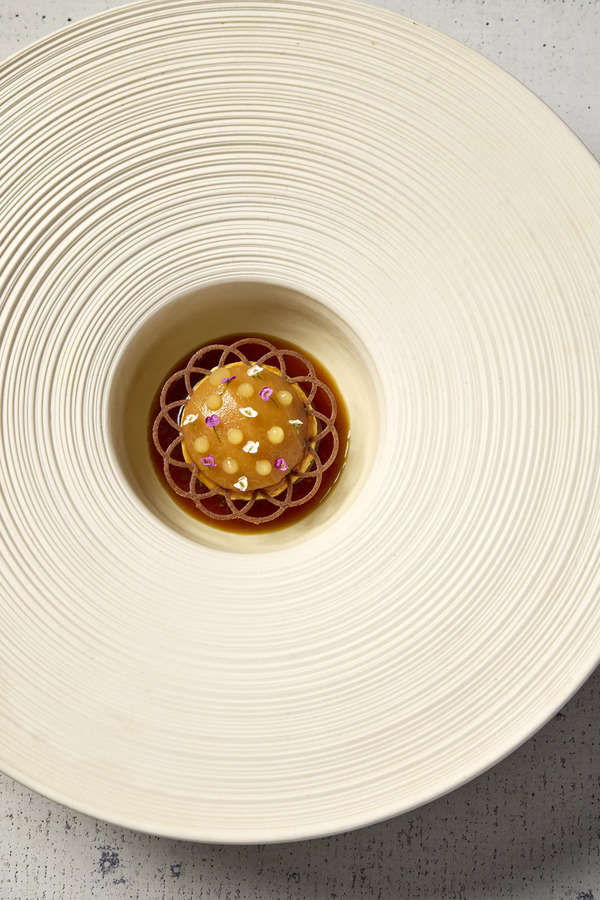
[ad_1]
It’s been just over a year since Indienne opened its doors in Chicago, and already you’ve made it to Michelin. What is the secret?
When you do a fine diningrestaurant, you have to be properly ready with your concept, the recipes and most importantly, your team.There is no place for trial and error. I have been in the restaurant business for a long time—almost 20 years—and I always wanted to do a fine-dining restaurant, I’ve tried it in India as well with Rooh earlier but it didn’t take off. I started working on Indienne after I got stuck in Chicago during Covid-19. I live a mile away from where the restaurant is. I have literally built it from scratch, brick by brick. I knew what I wanted this place to be and so did my team. The clarity of that vision is the reason we are here today.

Can you tell us about the challenges of breaking into the fine-dining scene in the US?
Fine dining is also changing. Modern fine dining is not like it used to be—stiff and formal. With Indienne, it’s also more affordable. So, while we focus on details of each and everything—from the service to the wine and cocktail menu to being creative with the food — the best part about Indienne is its affordable luxury. That’s the main philosophy behind it. In America, it’s not easy to do fine dining of this calibre. This is not a small restaurant. We are almost a 90-seater establishment and the tasting menus run up to more than 100 on weekends. Not a single Indian restaurant anywhere in the world comes close. That’s the beauty of what we do at Indienne. Even the servers who are all from different countries have a very clear grasp of all the ingredients and the story behind each of the dishes. They can easily explain that to our diners, 60% of whom are not Indian.

Blackberry Kala Khatta and Mushroom Galauti Eclair
You are being hailed as the first Bengali chef to win a Michelin star.
That’s not right. Palash Mitra from Hong Kong has also got one before me for the New Punjab Club. But I have a different style of doing things. And yes, I am from Bengal but I studied in Bhubaneswar, lived in Mumbai, Delhi, Goa, everywhere, and my training is in modern European and French style of cooking. So, our menu is pan-India and the approach is Indian-French—essentially following the meticulous, technique-driven French style of cooking where we pay respect to all ingredients and maintain that same detailing in the presentation as well.
It’s amazing how Indian food can be elevated to such a level without losing its flavour. People tend to forget that Ek Bar (co-owned by Sarkar) was one of the first few establishments in India which made Indian food contemporary with modernist techniques. Having said that, yes now there are plenty of restaurants in India doing a commendable job of putting regional flavours centrestage. In India, you have enough people who understand the nuances well. What we are doing at Indienne is adding a much more modernized version of Indian food without losing its integrity. For instance, there’s a whole different version of aloo tikki and dahi chaat, but if you close your eyes and eat, it will give you the exact same flavour. We did a version of medhu vada and now we are doing a dahi bhalla because I will always remember how I relished the one at Saravana Bhavan maybe five times a week in India. In my menu, we do sannas—idli where the batter is fermented with coconut water and steamed. So it’s lighter than idli but a little sweeter. Elaneer payasam made of tender coconut has layers in our take; in two months we will add white truffle to it. I also make a replica of a rasmalai for which the milk comes from a farm so it’s not treated. Our butter and cultured cream are made in-house. We use caviar only where it makes sense. Of course, we do keema samosa too but there’s no maida (white flour) in it. Instead, we use vegetable leather to wrap the samosa. So when you eat, there’s no gluten in it.

Besides yours, two other Indian restaurants (Semma in New York and Rania in Washington DC) got star ratings at the same time. What is changing with respect to the elevation of Indian food in the US?
I think Indian food will grow because people like the flavors. But it has to be done right. We have to work harder because Indian food is cooked. It’s not high on raw elements. Other cuisines have a lot more raw food which is much easier to handle. When you cook everything, one has to be even more careful with its shelf-life and presentation. But yes, the three of us who got the Michelin stars, we are all so different. There are so many good Indian restaurants in the US today, although not many in the fine-dining space because that requires a lot more hard work and consistency.
What are you aiming for next?
Number one is to retain the star rating; that’s a great responsibility. And we have to push it forward to two stars with greater creativity, finesse and the top-notch hospitality that India is famous for. But we will do so without changing our ideology or the price point too much. My logic is that I want to keep food which is accessible and affordable—our tasting menus are very well priced. That is also the best part about eating in India, right? We get amazing food for very little money like nowhere else in the world. You don’t have to break the bank to come dine at Indienne.
[ad_2]
Source link